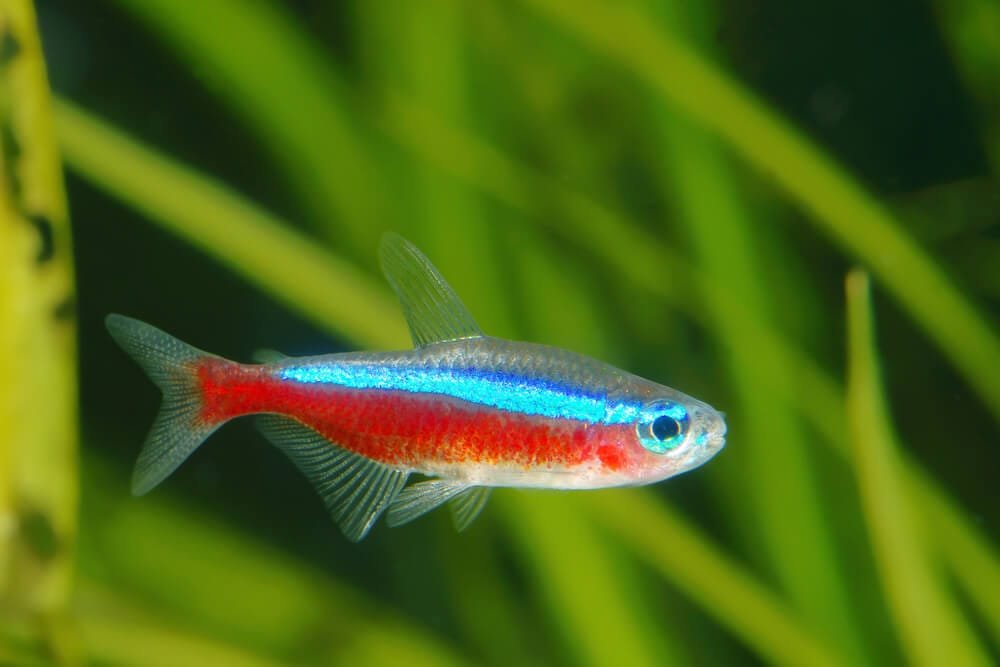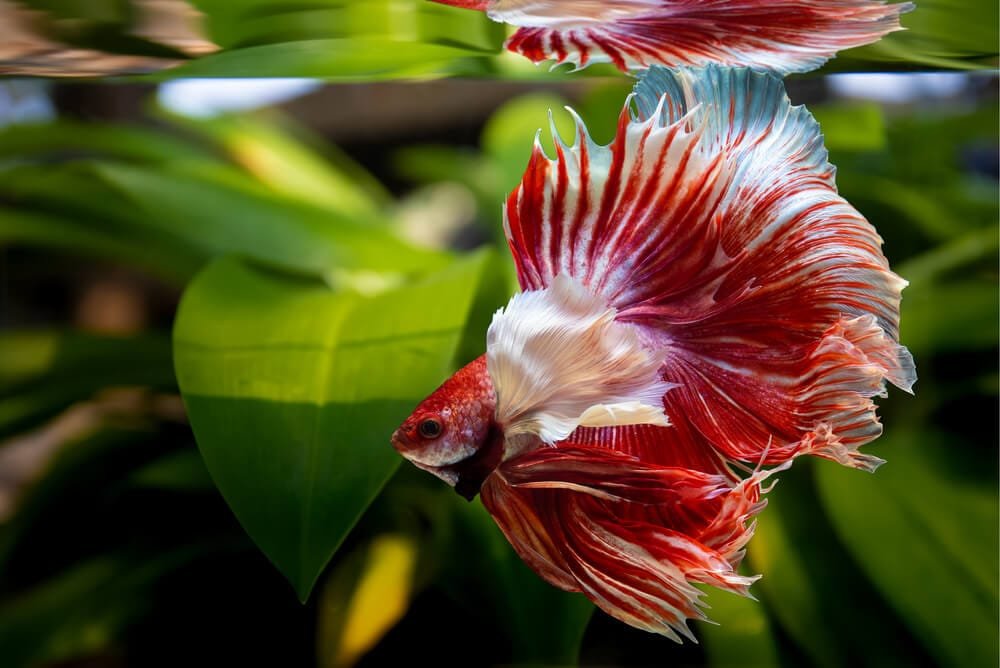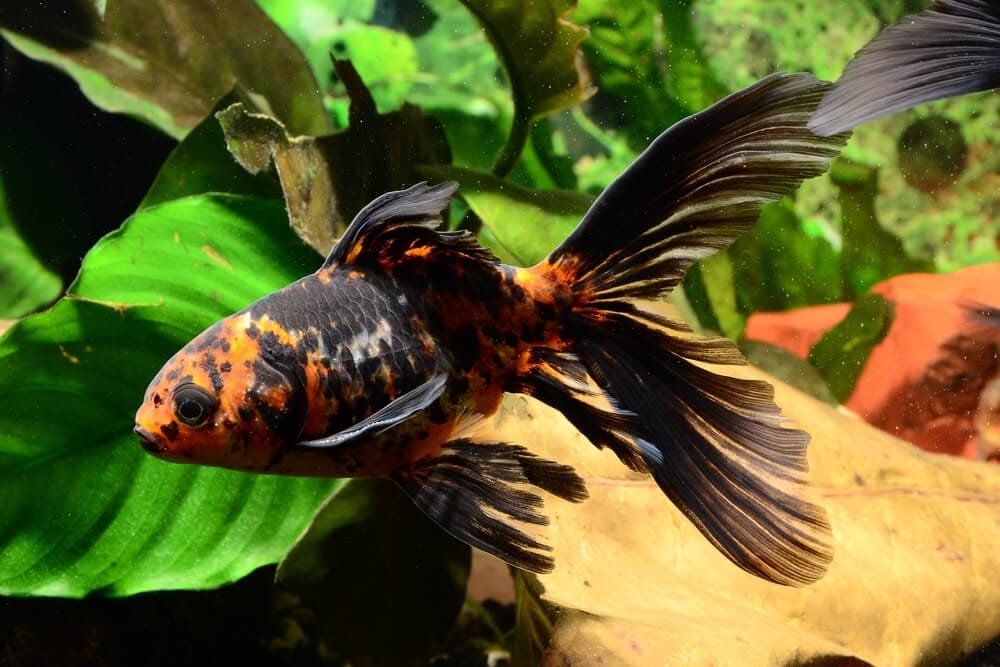What Are The Different Betta Fish Tail Types?
Are you a fan of Betta fish and its mesmerizing beauty? If so, then you have probably marveled at the various tail types that these magnificent creatures possess. From the elegant and flowing veil tail to the intricate and eye-catching crown tail, each Betta fish tail type is a unique work of art. In this article, we will explore the different tail types of Betta fish, discussing their characteristics and what makes them so captivating to behold. So, if you’re ready to dive into the world of Betta fish and discover the wonders of their tails, let’s begin!
Halfmoon Tail
Description
The Halfmoon Betta fish is known for its gorgeous and symmetrical tail shape, which resembles a half moon. The tail is long, flowing, and spreads out beautifully when the fish is in full display. The Halfmoon tail is characterized by its straight and full edges, giving it a regal and majestic appearance. This tail type is highly sought after by Betta fish enthusiasts for its stunning beauty.
Characteristics
Aside from its striking tail shape, the Halfmoon Betta fish typically has a short body compared to other Betta fish varieties. Their fins are typically long, flowing, and delicate. The vibrant colors of the Halfmoon Betta fish further enhance their overall appeal. You can find them in various hues, including rich blues, vibrant reds, and mesmerizing purples.
Care Tips
Caring for a Halfmoon Betta fish requires attention to detail. Since their tails are long and flowing, it’s important to provide them with enough space to swim comfortably. A tank size of at least 5 gallons is recommended to ensure optimal comfort for your fish. Keeping the water clean and properly filtered is essential to promote a healthy environment for your Betta. Additionally, maintaining a consistent water temperature between 78-82°F and feeding them a balanced diet of high-quality Betta fish pellets will contribute to their overall well-being.
Crowntail Tail
Description
The Crowntail Betta fish is named for its unique tail shape that resembles a crown. Unlike other Betta fish tail types, the edges of the tail are pointed and elongated, creating a spiky appearance that is reminiscent of a crown. The tail membrane has a web-like structure, adding an extra touch of elegance to their overall look. Crowntail Betta fish exhibit a wide range of vibrant colors, making them a popular choice among Betta enthusiasts.
Characteristics
In addition to their captivating tail shape, Crowntail Betta fish have a slender body that is slightly longer than that of a Halfmoon Betta. Their fins are long, flowing, and delicate, complementing the spiky edges of their tails. This tail type is often found in a variety of colors, from vibrant reds and blues to striking metallic shades.
Care Tips
Proper care for Crowntail Betta fish is crucial to ensuring their health and well-being. Similar to other Betta fish, they require a minimum tank size of 5 gallons to allow for adequate swimming space. Maintaining clean and well-filtered water is essential, as Crowntail Betta fish are prone to fin issues such as tearing. It is recommended to provide hiding spots and live plants in their tank to create a stimulating and enriching environment. Regular water changes and a balanced diet consisting of Betta fish pellets and occasional treats will help your Crowntail Betta thrive.
Veiltail
Description
The Veiltail Betta fish is one of the most common and recognizable Betta fish tail types. Its name originates from the long, flowing veil-like tail that cascades down its body. The tail length can vary from moderate to extravagant, creating a stunning visual effect. The Veiltail Betta’s tail edges are noticeably rounded, giving it a soft and graceful appearance.
Characteristics
Veiltail Betta fish have a short and stout body, making their flowing tails even more eye-catching. Their fins are long and thin, extending beyond the tail and creating a captivating display when in motion. These fish are known for their vibrant colors, ranging from vibrant reds and blues to elegant whites and pastels.
Care Tips
Caring for a Veiltail Betta fish requires attention to its unique tail shape. Veiltails tend to have longer fins and tails, so ensuring a tank size of at least 5 gallons is essential for their comfort. Regular water changes and proper filtration are crucial to maintain clean water conditions. It is recommended to avoid sharp decorations or plants with sharp edges in their tank to prevent fin damage. Providing a balanced diet and maintaining a stable water temperature between 78-82°F will contribute to the overall health and well-being of your Veiltail Betta fish.
Double Tail
Description
The Double Tail Betta fish is famous for its extraordinary split tail, which gives the illusion of having two separate tails. This unique trait immediately sets it apart from other Betta fish tail types. The tail is wide and fanned out, resembling a butterfly’s wings. Double Tail Bettas showcase an array of colors, making them a captivating addition to any aquarium.
Characteristics
Aside from their show-stopping tails, Double Tail Betta fish have a relatively short and stocky body. Their fins are also split, mirroring the double tail appearance. This tail type is known for its vibrancy, and you can find Double Tail Bettas in a spectrum of colors, including intense reds, mesmerizing blues, and striking metallic shades.
Care Tips
Taking care of a Double Tail Betta fish requires creating the ideal environment for their unique tail structure. A tank size of at least 5 gallons is recommended to provide them with ample space to swim comfortably. Due to their long and flowing tails, it is essential to prevent water currents that may damage their delicate fins. Maintaining optimal water conditions, regular water changes, and a balanced diet are crucial for their well-being. Additionally, providing plenty of hiding spots and decorations will help create a stimulating and enriching environment for your Double Tail Betta fish.
Delta Tail
Description
The Delta Tail Betta fish is named after its tail shape, which resembles the Greek letter delta (Δ). The tail is broad at the base and tapers to a point, creating a triangular appearance. The edges of the tail are typically straight or slightly rounded, giving it a clean and sleek look. Delta Tail Bettas are known for their graceful and eye-catching appearance.
Characteristics
Apart from their unique tail shape, Delta Tail Betta fish have a slender and elongated body compared to other Betta fish varieties. Their fins are also long and flowing, complementing the clean lines of their tails. These fish exhibit a wide range of colors, from vibrant reds and blues to pastel shades and even metallic hues.
Care Tips
Caring for a Delta Tail Betta fish involves creating a suitable environment that meets its needs. A tank size of at least 5 gallons is recommended to provide them with ample space to swim around comfortably. Ensuring clean and properly filtered water is crucial to maintain their overall health. Delta Tail Bettas are generally peaceful, but they may display aggressive behavior towards other fish, so it is ideal to keep them in a separate tank. Maintaining a stable water temperature between 78-82°F and providing a varied diet consisting of high-quality Betta fish pellets and occasional treats will contribute to their overall well-being.
Plakat Tail
Description
The Plakat Betta fish is known for its short and spiky tail, which sets it apart from other Betta fish tail types. The tail is significantly shorter compared to other varieties, creating a unique and sporty appearance. Plakat Tail Bettas are highly valued for their simplicity and elegance, attracting Betta fish enthusiasts with a preference for a more streamlined look.
Characteristics
Plakat Tail Betta fish have a streamlined and muscular body, reflecting their more active nature compared to other Betta fish. Their fins are shorter and more robust, allowing them to swim with agility and speed. This tail type is available in a wide range of colors, making them a versatile option for any aquarium.
Care Tips
Proper care of a Plakat Tail Betta fish involves understanding their active nature and providing an environment that accommodates their needs. A tank size of at least 5 gallons is recommended to allow for ample swimming space. Providing hiding spots and decorations such as driftwood and live plants will enhance their habitat and create a more natural setting. Regular water changes, proper filtration, and maintaining a stable water temperature between 78-82°F are essential for their well-being. Offering a varied diet and occasional live or frozen foods will fulfill their nutritional requirements and promote optimal health.
Rose Tail
Description
The Rose Tail Betta fish is characterized by its unique and extravagant tail appearance, resembling a rose in full bloom. This tail type is an exquisite variation of the Halfmoon Betta fish. The tail edges are extremely full, with layers upon layers of delicate and flowing fins. Rose Tail Bettas are highly sought after by enthusiasts for their breathtaking beauty and luxurious appearance.
Characteristics
Alongside their extravagant tails, Rose Tail Betta fish have a short and stout body similar to Halfmoon Bettas. Their fins are extremely long, full, and elaborate, creating a mesmerizing display when they swim. These fish exhibit a wide range of colors, including vibrant reds, purples, and blues, which are further enhanced by the abundance of finnage.
Care Tips
Caring for a Rose Tail Betta fish requires attention to their delicate tail structure and proper maintenance of water conditions. A tank size of at least 5 gallons is recommended to provide them with sufficient space and prevent unnecessary fin damage. Regular water changes, proper filtration, and maintaining a stable water temperature between 78-82°F are crucial to their well-being. Providing a balanced diet consisting of high-quality Betta fish pellets, occasional treats, and the occasional live or frozen foods will ensure they receive the proper nutrition to thrive.
Dumbo Ear
Description
The Dumbo Ear Betta fish is named after its distinct and adorable feature – its uniquely large pectoral fins that resemble the ears of an elephant. These enlarged fins are positioned on the sides of their heads, giving them a charming and distinctive appearance. Dumbo Ear Bettas are often sought after for their unique and cute aesthetic.
Characteristics
In addition to their large pectoral fins, Dumbo Ear Betta fish have a moderately long and slender body. Their fins are long and flowing, complementing the size and shape of their pectoral “ears.” This tail type can be found in a variety of colors, ranging from vibrant and solid hues to intricate patterns.
Care Tips
Proper care for a Dumbo Ear Betta fish involves being mindful of their larger pectoral fins and providing a suitable environment. A tank size of at least 5 gallons is recommended to ensure they have ample space to swim comfortably. Avoiding sharp decorations or plants with rough edges is essential to prevent any damage to their fins. Maintaining clean and well-filtered water is crucial, as Bettas are particularly vulnerable to fin issues. Providing hiding spots and live plants will create a stimulating and enriching environment. Regular water changes, a balanced diet, and a stable water temperature between 78-82°F are imperative for their overall well-being.
Spade Tail
Description
The Spade Tail Betta fish is named after its unique tail shape, which is reminiscent of a spade playing card. The tail is broad at the base and tapers to a point, creating a sharp and sleek appearance. Spade Tail Bettas offer a visually striking alternative to the more common tail types, capturing the attention of Betta enthusiasts with their distinct shape.
Characteristics
Apart from their spade-shaped tails, Spade Tail Betta fish have a sleek and elongated body compared to other Betta varieties. Their fins are also long and flowing, complementing the distinct lines of their tails. This tail type can be found in an array of colors, adding to their overall allure.
Care Tips
Caring for a Spade Tail Betta fish involves providing them with a suitable environment that meets their needs and tail structure. Similar to other Betta fish, a tank size of at least 5 gallons is recommended to allow for ample swimming space. Clean and well-filtered water is essential to maintain their overall health. Regular water changes and maintaining a stable water temperature between 78-82°F are crucial. Offering a balanced diet consisting of high-quality Betta fish pellets and occasional treats will contribute to their overall well-being.
Comb Tail
Description
The Comb Tail Betta fish is recognized for its unique and intricate tail shape, which resembles the teeth of a comb. The tail is characterized by multiple rays that extend outwards, creating a delicate and ornate appearance. Comb Tail Bettas stand out from other tail types with their distinct and captivating patterns.
Characteristics
In addition to their comb-like tail shape, Comb Tail Betta fish have a moderately long and slender body compared to other Betta fish varieties. Their fins are long, flowing, and often showcase intricate patterns, complementing the detailed structure of their tails. This tail type is available in a wide range of vibrant colors, providing endless possibilities for mesmerizing color combinations.
Care Tips
Proper care for a Comb Tail Betta fish involves providing an optimal environment for their intricate tail structure and patterns. A tank size of at least 5 gallons will allow them ample space to swim comfortably. Maintaining clean and well-filtered water is crucial for their overall health. Hiding spots and live plants will create a stimulating and enriching environment for your Comb Tail Betta fish. Additionally, regular water changes, a balanced diet, and a stable water temperature between 78-82°F will contribute to their well-being.
In conclusion, the world of Betta fish offers a wide variety of tail types, each with its unique beauty and charm. Whether you prefer the regal Halfmoon or the breathtaking Rose Tail, there is a Betta fish tail type to suit every enthusiast’s taste. By providing the proper care, attention, and a suitable environment, you can ensure that these majestic fish thrive and continue to captivate admirers for years to come. Happy Betta fish keeping!





